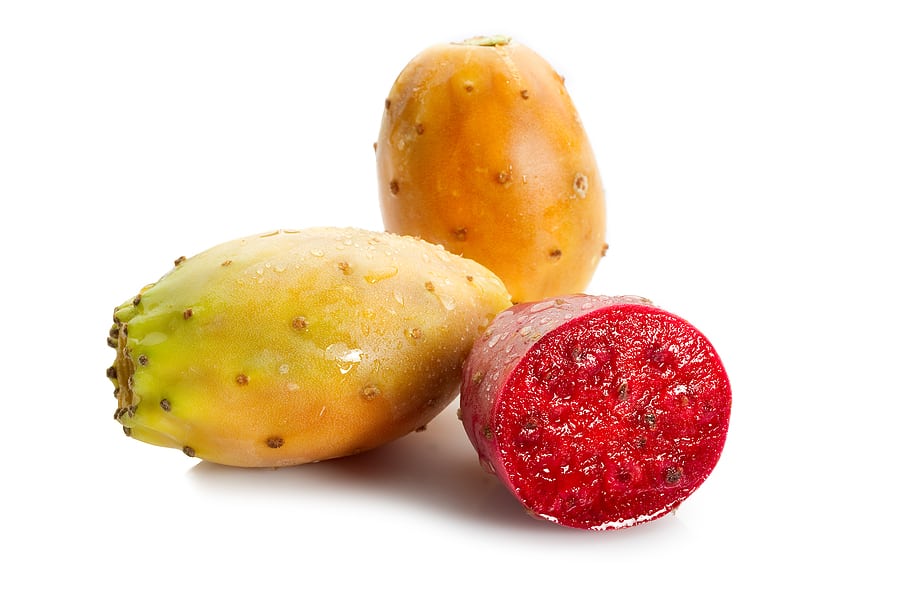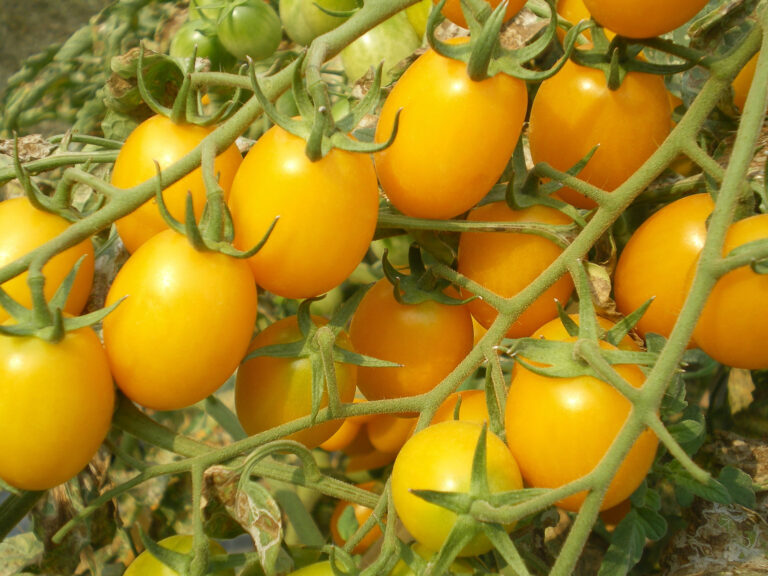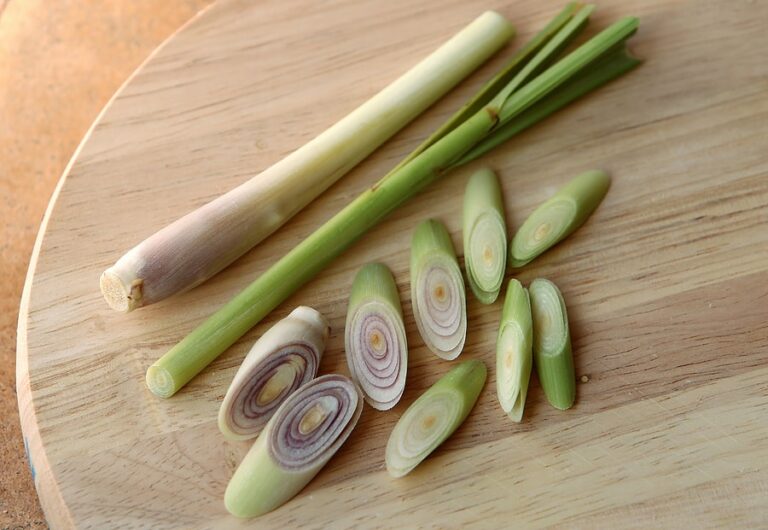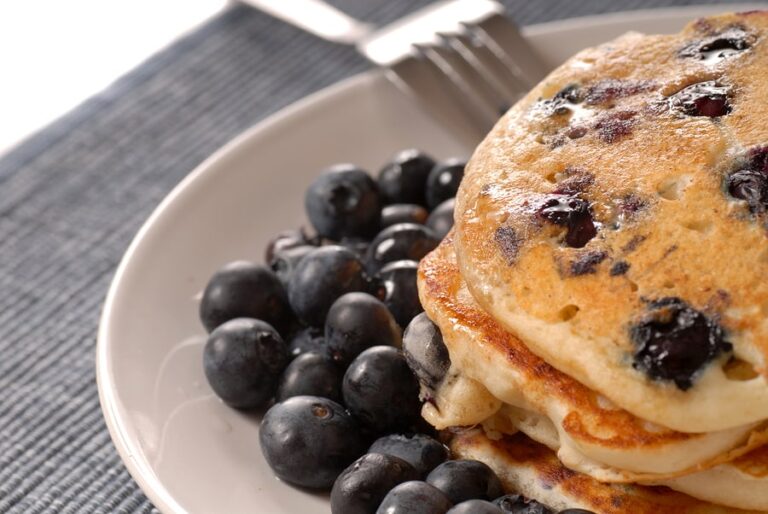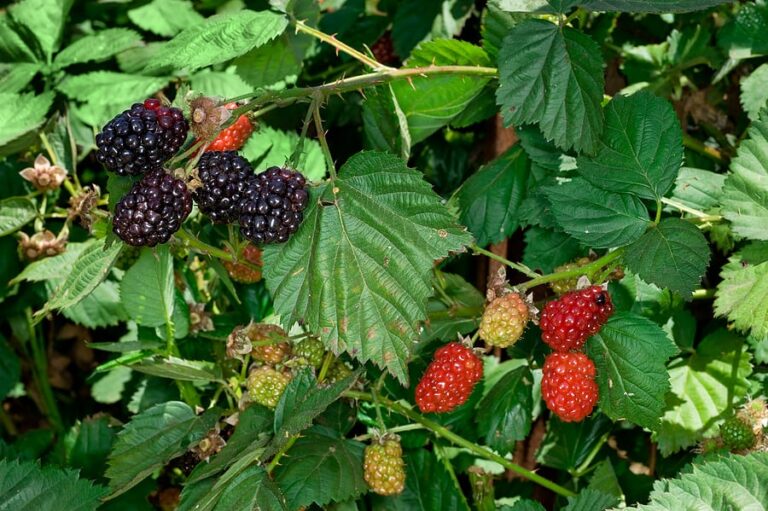How to Prepare and Serve Prickly Pear
The prickly pear is a cactus fruit that is actually a berry. The pulp of the prickly pear is sweet and moist with an aroma and flavor similar to a combination of the tastiest tropical and subtropical fruits, strawberry, watermelon, honeydew melon, fig, and banana.
The salmon or pink to magenta-colored flesh of the prickly pear can be sliced or cubed and eaten raw once the fruit’s hard black seeds are removed. The flesh can be puréed and added to yogurts, sorbets, or ice cream or used as a flavoring for drinks. In Mexico, the prickly pear is known as a “cactus candy.”
The prickly pear fruit is usually 2 to 4 inches long and egg or barrel-shaped, about the size of a kiwi fruit or small guava. The skin is thick and coarse and can vary in color from green to yellow to orange or pink or red, or a bit of all these. The color of the fruit and flesh is preceded by blossoms of the same color.
The prickly pear’s skin is essentially the fruit’s rind and is covered with stiff spines that must be carefully removed. Nopales are the leaves of the cactus pear which also can be eaten. They too are covered with prickly spines or hairs.
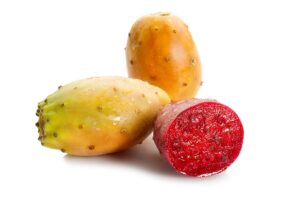
Prickly pear harvest season
The peak season for prickly pears is late summer through early winter, September to December in the northern hemisphere.
How to select prickly pear
Choose small, smooth, unblemished, deep-colored prickly pears that are firm but not hard. The fruit will yield to gentle pressure when ripe. The skin should be shiny. Avoid fruit that is moldy or broken. Prickly pears are ripe for about a week.
How to store prickly pear
Prickly pears can be refrigerated in a plastic bag for 2 to 3 days. Firm prickly pears will ripen and soften at room temperature in a few days.
How to prepare prickly pear
Use care in preparing the prickly pear for cooking, a pair of thick leather gloves is recommended. Remove the sharp spines with pliers, cut off the ends of the pear, make a shallow slit in the skin down the length of the fruit and peel back both the inner and outer layers of skin back from top to bottom with a sharp knife. The prickly pear can have small stinging nearly invisible hairs. You can remove these hairs by passing the fruit through an open flame. To remove the seeds, press the fruit through a sieve or food mill. Be sure to remove the seeds before cooking, otherwise, they will harden during cooking.
Cooking prickly pear
Simmer prickly pear slices with water and sugar for 15 minutes or until tender, blend, strain, and chill. You can combine this purée with white wine vinegar or cider vinegar to make a salad dressing.
Serving prickly pear
Serve prickly pear whole, cubed, or thin sliced in fruit cups or salads or sprinkled with lemon or lime juice. The sieved flesh can be served in punches and cocktails or as a flavoring for sorbets and yogurts. Prickly pear purée can be used as a filling for tarts and cakes or to make jam or juice.
Prickly pear flavor partners
Prickly pear has a flavor affinity for banana, honeydew melon, lemon, lime, orange, tequila, and watermelon.
Prickly pear nutrition
Prickly pears are a good source of magnesium and potassium and also contain calcium, vitamin C, and sodium. The prickly pear is low in calories.
Prickly pear facts and trivia
The prickly pear is also called tuna pear or tuna fig, cactus pear, Indian fig, or Indian pear. In Britain, the prickly pear is called the Barbary fig or pear. In Israel, the prickly pear is called Sharon’s fruit. In Spain, prickly pears are known as tunas and in Italy, the prickly pear is called fichi d’india.
Prickly pears are native to the tropical regions of the Americas and have been eaten by native peoples since ancient times. The prickly pear is a member of the Optunia cactus family with more than 300 species. Most originated in northwest Mexico or the southwestern United States. The best-known varieties are ‘Cardona’ which has a large purplish red flower and fruit and ‘Amarilla’ which is mostly yellow.
The botanical name of the prickly pear is Optunia ficus-indica.
Related articles:
Planning the Home Fruit Garden
Garden Planning Books at Amazon:
- Vegetable Garden Almanac & Planner
- Kitchen Garden Grower’s Guide Vegetable Encyclopedia
- Vegetable Garden Grower’s Guide
- Tomato Grower’s Answer Book
More kitchen tips:
Bring your harvest to the table. Kitchen prep tips and easy recipes for the vegetables you grow. Click below for vegetable prep and recipes you can use now.
- Almonds
- Apples
- Apricot
- Aprium
- Artichoke
- Arugula
- Asparagus
- Avocado
- Bamboo Shoots
- Banana
- Basil
- Beans, Dried
- Beans. Long
- Beans, Shell
- Beans, Snap
- Beets
- Bitter Melon
- Blackberry
- Bok Choy
- Broccoli
- Broccoli Raab
- Brussels Sprouts
- Cabbage
- Cardoon
- Carrots
- Cauliflower
- Celeriac
- Celery
- Chard
- Chayote Squash
- Cherimoya
- Cherries
- Chestnut
- Chickpea
- Chinese Cabbage
- Chives
- Cilantro
- Citron
- Clementine
- Collards
- Coriander
- Corn, Sweet
- Corn, Baby
- Corn Salad, Mache
- Cranberry
- Cress
- Cucumber
- Daikon
- Dandelion
- Dill
- Eggplant
- Endive, Belgian
- Endive and Escarole
- Fava Beans
- Fig
- Florence Fennel
- Garlic
- Ginger
- Grapefruit
- Grapes
- Guava
- Horseradish
- Jerusalem Artichoke
- Jicama
- Jujube
- Kale
- Kiwifruit
- Kohlrabi
- Kumquat
- Leeks
- Lemongrass
- Lemons
- Lettuce
- Lime
- Mache (Corn Salad)
- Mandarin Orange
- Mango
- Maple Syrup
- Marjoram
- Melons
- Michihili
- Mint
- Mizuna
- Mushrooms
- Mushrooms, Cremini
- Mustard Greens
- Napa Cabbage
- Nectarine
- Okra
- Olives
- Olive oil
- Onions
- Oranges
- Oregano
- Parsley
- Parsley Root
- Parsnips
- Passion Fruit
- Pawpaw
- Peaches
- Pears
- Peas, Garden Snap
- Peas, Snow
- Pei Tsai
- Peppers, Chili
- Peppers, Sweet
- Persimmon
- Pineapple
- Pineapple Guava
- Plantain
- Plums
- Pluots
- Pomegranate
- Potatoes
- Prickly Pear
- Pumpkin
- Quince
- Radicchio
- Radishes
- Raspberries
- Rosemary
- Rhubarb
- Rutabaga
- Sage
- Salsify
- Sauerkraut
- Savory
- Shallots
- Sorrel
- Spinach
- Squash, Summer
- Squash, Winter
- Strawberries
- Sunchokes
- Sunflower
- Sweet Potato
- Swiss Chard
- Tangerine
- Taro
- Tarragon
- Thyme
- Tomatillo
- Tomato
- Turnip
- Turnip Greens
- Yams

